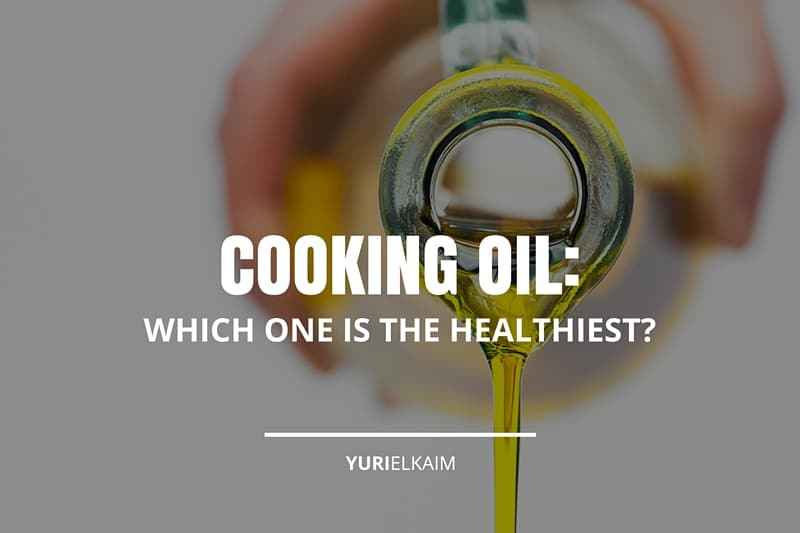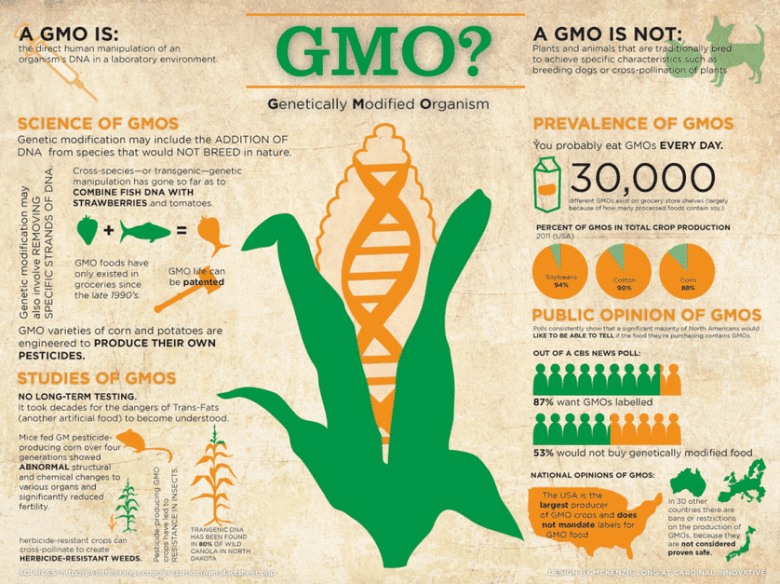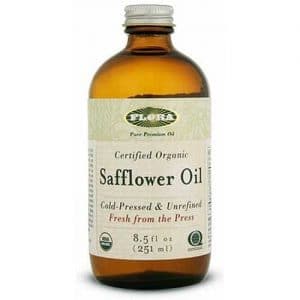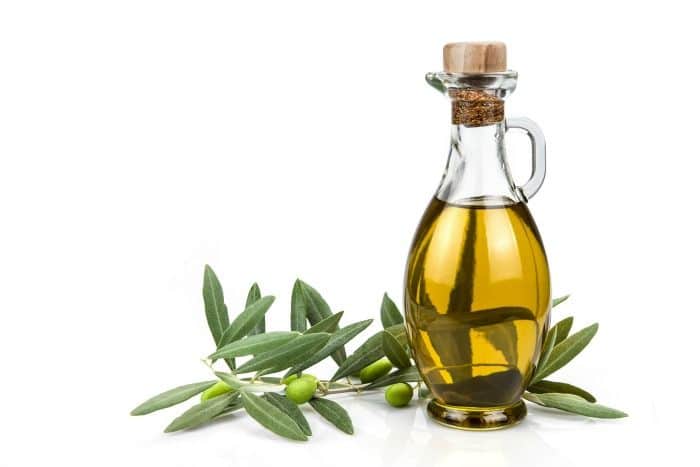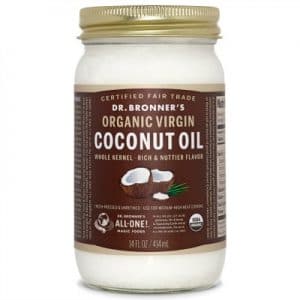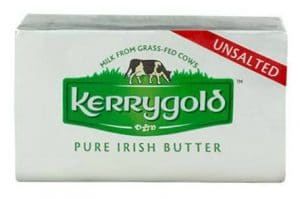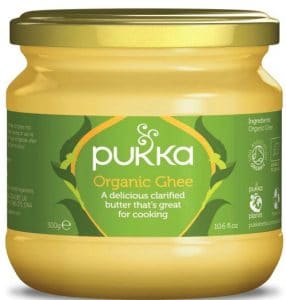In this article
- The Truth About Vegetable Oils
- Vegetable Oils Are Made From GMOs
- Vegetable Oil Processing Methods are Dirty
- Why the Omega 3:6 Ratio Matters
- Vegetable Oils in Prepared Foods
- What About Olive Oil?
- How Hydrogenated Oils Destroy Your Health
- What Is the Healthiest Cooking Oil?
- Try Ghee as a Substitute
- How to Dispose of Cooking Oil
- Know Your Fats
All of these years, we’ve been lied to when it comes to the healthiest cooking oils.
You’ve probably heard that unsaturated vegetable oils are the best oils to use for cooking to prevent cardiovascular disease, heart attacks and strokes.
On the other hand, you also may have heard that using coconut oil – (gasp) a saturated fat – is the best fat to cook with.
With the endless amount of conflicting information splattered across the internet, how are you supposed to make informed decisions for your own well being?
It’s time to finally set the record straight and expose the good, the bad, and the ugly of cooking oils – and how these fats can make or break your health, and learn what is the healthiest oil to cook with.
The Truth About Vegetable Oils
Vegetable oils are a nutrition topic surrounded by no shortage of controversy – especially since they’re recommended by many dieticians and major health organizations like the American Heart Association.
Vegetable oils are often referred to as healthy because they contain no saturated fat, which was once thought to be the cause of heart disease (but more on that in a moment).
The most common vegetable oils include corn, canola, soybean, safflower, peanut, and sunflower oil. These vegetable oils cannot be extracted from their seeds using natural methods such as cold processing, so they must undergo aggressive processing using chemicals to be turned into vegetable oils.
Two varieties of unsaturated fats are found in vegetable oils: polyunsaturated and monounsaturated fats, or PUFAs and MUFAs for short.
Both of these fats are liquid at room temperature and can oxidize, or turn rancid, when they’re exposed to light and heat (1).
Oxidized fats can then turn into free radicals, which destroy cells in the body.
PUFAs and MUFAs also contain omega 3 and omega 6 essential fatty acids. Both of these fats are called essential because our bodies cannot produce them on their own, and they’re required for heart health, healthy cells, growth and development, memory and cognitive function (2).
Now, aside from the oxidation factor, you may be thinking that vegetable oils don’t sound like the worst thing in the world.
But the truth is, vegetable oils have a dark side that isn’t discussed nearly as often as it should be.
Vegetable Oils Are Made From GMOs
The first problem with vegetable oils is that they’re typically sourced from genetically modified organisms, or GMOs – especially when it comes to soy, canola and corn oil (3).
Source: Medical Daily
At present time, GMOs haven’t been around long enough for us to truly understand their impact on health.
But also at present time, studies on rats have shown they promote the growth of cancer-causing cells (4).
GMOs are also highly sprayed with pesticides, which act as cell-destroying toxins in the body that can lead to cancer (5).
Vegetable Oil Processing Methods are Dirty
Before vegetable oils are bottled up in plastic for us to bring home and use to cook a “healthy meal,” they undergo extreme processing and chemical exposure.
In very simple terms, here’s how vegetable oil is processed:
1. To prepare seeds for oil extraction, they’re heated at extremely high temperatures that damage and oxidize their delicate fats before they’re even extracted.
Oxidized is a fancy word for rancid, which forms trans fats and cancer causing free-radicals in the body.
2. Once the seed is has been heated, a petroleum solvent is used to initiate the oil extraction process.
3. Since the petroleum solvent turns the oil a nasty, cloudy color, it must further be treated with more chemicals to make the oil appear somewhat edible looking.
4. The chemical process creates a nasty smell, so the oil is then chemically deodorized.
5. In some cases, the finished product is also packaged into clear or dark plastic containers, which contain endocrine-disrupting toxins such as bisphenol-A, or BPA, that leach into the oil (6).
Not all vegetable oils come in plastic containers, but this is another health concern to beware of.
Plastic containers are also see-through and allow plenty of light to reach the oil. As you now know, unsaturated fats are delicate to heat and light. So the light exposure further adds to the rancidity of the oil.
Vegetable oils sound delicious, don’t they?
As if the processing method isn’t reason enough to avoid refined vegetable oils, they also contain too many omega 6 essential fatty acids.
While omega 6 fatty acids are essential for growth and development, taking in too much can cause serious health problems.
Why the Omega 3:6 Ratio Matters
As mentioned above, both omega 3 and omega 6 essential fatty acids are needed for building the foundation of our health. From our cellular health to cognitive function, we simply wouldn’t be able to survive without getting omega 3s and 6s from our diets.
However, omega 3s and 6s – while grouped in the same category – have very different properties.
You see, omega 3s reduce inflammation in the body, while omega 6s promote inflammation (7).
Since inflammation is the root cause of all illness and disease – including cardiovascular disease – you can see why over consuming omega 6s and a lack of omega 3 essential fatty acids is a cause for concern.
A diet rich in omega 6 essential fatty acids and low in omega 3s has not only been linked to cardiovascular disease, but the development of autoimmune conditions such as rheumatoid arthritis as well as premature aging, depression and cancer (8).
Now, you may be wondering why on earth a pro-inflammatory nutrient is needed by the body.
The truth is, omega 6s aren’t harmful to health unless they’re consumed in large quantities. The ideal ratio of dietary omega 6s to omega 3s is estimated between 2:1 and 4:1 for optimal health (9).
Our omega 6 to 3 ratio is currently estimated at 25:1 (9). Needless to say, that’s a lot of pro-inflammatory nutrition in our diets.
Vegetable Oils in Prepared Foods
Even if you don’t cook with vegetable oils at home, vegetable oils are the primary cooking oil used by restaurants when preparing deep fried foods and can also be found in almost all processed foods – even if they’re marketed as healthy.
I can almost guarantee you that if you check the label of commercially prepared granola or cereal next time you’re out grocery shopping, one of its ingredients will be a high omega 6 vegetable oil, such as sunflower, soybean, canola, or safflower oil.
The oils with the highest omega 6 to omega 3 ratios are:
- sunflower,
- peanut,
- cottonseed,
- safflower,
- corn and
- soybean oil (10).
Remember, we want to achieve the lowest ratio possible.
Safflower oil is almost exclusively made up of omega 6s, so if you’re going to avoid any one vegetable oil, I recommend it being safflower oil.
Meanwhile, canola only contains about a 20 percent ratio of omega 6s which isn’t as bad when compared to the vegetable oils listed above. However, with canola oil being a GMO crop and processed with several chemicals, it’s still best to avoid at all costs.
It’s nothing short of shocking that they’re used so commonly and recommended for heart health. So, if you’re beginning to scratch your head in confusion as to why any health supportive company or health professional would ever recommend vegetable oils, I’m with you.
What About Olive Oil?
Now, not all fats have been created equally. Olive oil is an example of a fat that contains a high omega 3 ratio, which makes it an ideal fat to consume for heart health.
Opposed to high omega 6 diets, high omega 3 diets have been shown to reduce inflammation, prevent cardiovascular disease and provide the body with the building blocks for healthy cells.
But when it comes to cooking with olive oil, I highly recommend avoiding it.
Olive oil is an unsaturated healthy fat, and as I mentioned earlier, unsaturated fats are very sensitive to heat and light, which cause them to turn rancid and form trans fats (11).
The same rule applies for other high omega 3 fats, such as hemp oil, flax oil, and chia seed oil. It’s imperative that you do not avoid including omega 3 fats in your diet, but that you incorporate them into non-heated dishes by adding them to your homemade salad dressings or drizzling them on top of your favorite uncooked (or not heated up) lunch and dinner recipes, such as quinoa bowls.
High-quality polyunsaturated oils will be unrefined, organic and cold-pressed. They should also always be stored in dark glass containers to prevent oxidation.
Certain oils that are extremely sensitive to warm temperatures, such as flax oil or fish oil, should also be stored in the refrigerated section.
How Hydrogenated Oils Destroy Your Health
If you’ve ever seen margarine before, you’ve seen a hydrogenated fat.
Hydrogenation is a process that’s used to turn unsaturated fats that are liquid at room temperature – such as canola oil – to solids, using extremely high temperatures. As you now understand, unsaturated fats turn rancid and form trans fats when they’re exposed to high temperatures.
You guessed it: margarine is a nice big bucket of cell-destroying trans fats.
So, why does margarine even exist?
Simply put, margarine was initially created as a healthy alternative to saturated fats such as butter.
Saturated fats were once thought to be the primary cause of cardiovascular disease (which is a myth that is still constantly being debunked in the nutrition realm), so an alternative that looked and tasted like butter – but made without any saturated fats – seemed like a nutrition miracle.
But the truth is, studies have even confirmed that the high LDL cholesterol, plaque buildup and triglycerides that lead to heart disease isn’t caused by saturated fat (12).
Rather, heart disease stems from inflammation and free-radicals that can scar and damage your arteries. And where does a major source of dietary inflammation and free radicals come from? That’s right – trans fats and omega 6 essential fatty acids (8)(13).
What Is the Healthiest Cooking Oil?
Basically, stable, saturated fats are the best oils to cook with because they aren’t sensitive to heat or light.
This means that they can be used for cooking on high temperatures without forming trans fats or free radicals.
Both coconut oil and grassfed butter are two saturated fats I recommend using for cooking.
When it comes to coconut oil, coconut oil is neither an omega 3 or omega 6 fat, so it doesn’t cause any upset to the body’s omega 6:3 ratio.
Instead, coconut oil is made up of medium chain fatty acids that the body can convert to energy right away (14).
Coconut oil also has numerous other health benefits, such as being a natural antibacterial, thanks to a nutrient called lauric acid (15).
Butter, on the other hand, has been demonized by the food industry for the past few decades for being a saturated fat.
But as you now know, the “butter is bad” myth has been debunked based on the studies that prove saturated fats are not the primary cause of heart disease (12).
Butter also contains no omega 6 essential fatty acids, which makes it an ideal fat to include in your diet that won’t disrupt your omega 6:3 ratio. In fact, butter made from grass-fed cows is said to contain additional omega 3 essential fatty acids compared to the cows that have been fed with corn or grains.
Try Ghee as a Substitute
Ghee, or clarified butter, is another acceptable cooking oil because it is stable when exposed to high temperatures, just like regular butter and coconut oil.
Ghee has been used traditionally in Indian cooking for many years, but today, it’s sold in nearly all grocery and health food stores throughout North America.
Ghee is unsalted and has the milk protein removed from the butter, which may be suitable for those who have food intolerances or sensitivities to dairy.
Like the other fats we’ve mentioned above, quality is important when choosing your cooking oils.
The best type of coconut oil to purchase is an unrefined organic version, to ensure it hasn’t been exposed and treated with chemicals before landing on your pantry shelves.
When it comes to butter, in addition to being grass-fed, butter should also be purchased organically.
Both organic unrefined coconut oil and organic grass-fed butter can be purchased at your local health food stores and most major grocery stores.
How to Dispose of Cooking Oil
When you’re done cooking up a delicious feast of heart-healthy fats, what do you do with the leftover oil?
For small quantities of household cooking oil, the best way to dispose of cooking oil is to wait until your oil has cooled down, absorb it with a paper towel and place it in your garbage can. It’s important to avoid pouring cooking oil down your drain or washing it out of a greasy pan, as it can clog pipes and block sewers.
If you have a bottle of oil that’s gone bad, it’s best to check in with your local waste disposal to determine the safest way to get rid of it, as each city will have different waste regulations.
When remembering which oils are healthiest oils to cook with and which to avoid, here are a few key takeaways to remember:
- Unsaturated fats, such as MUFAs and PUFAs, are liquid at room temperature. Unsaturated fats turn rancid in the presence of heat and light, which is why they’re not recommended for cooking.
- Vegetable oils such as corn, canola, and soybean oil are heavily processed and exposed to toxic chemicals that damage our cells.
- Vegetable oils are also high in omega 6 essential fatty acids, which promote inflammation in the body and can lead to various forms of illness and disease.
- An ideal omega 6:3 ratio is between 2:1 and 4:1 for optimal health. Increasing your omega 3 essential fatty acid intake through healthy fats such as fish oil, flax oil, olive oil and hemp oil can help lower your omega 6 ratio, which promotes optimal health.
- Unsaturated omega 3 rich oils such as flax, olive oil and hemp oil, should only be used in cold dishes, such as salad dressings to prevent oxidation. They should also be purchased in dark glass containers, and in some cases, kept refrigerated.
- Saturated fats such as coconut oil and grassfed butter are not the cause of heart disease, as they were once thought to be.
Instead, we now recognize the primary cause of heart disease is a high consumption of trans fats and inflammation caused by omega 6 essential fatty acids, which are found in soy, corn and canola oil. - Coconut oil and grassfed butter are the best fats to use for cooking as they’re stable at high temperatures, which means they do not form trans fats when heated.
Know Your Fats
As you can see, fat isn’t the problem when it comes to health.
Instead, the types of fats and their effects on the body is what matters most when it comes to choosing the healthiest oil to cook with.
By understanding the impact each type of fat has on health, you’ll easily be able to determine which nutrition tips are best to follow, and which nutrition tips may not tell the whole story.
Eat Healthy Without the Worry
Want to make eating healthy simple again? If you’re looking for delicious, healthy, whole-food meal options, you’ll want to check out my All-Day Energy Diet Community Cookbook, which is packed with more than 65 quick and easy recipes.
Gluten- and dairy-free, low in sugar and allergens, and high in taste – these recipes are sure to please.
You can get it – for FREE! – by clicking the banner below.

